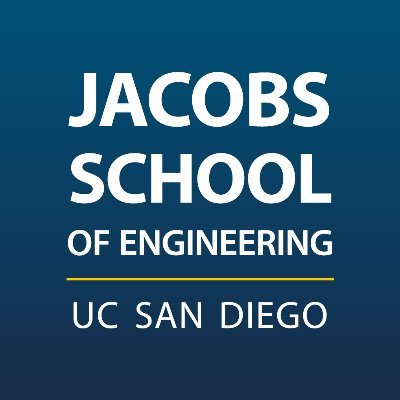News

June 17, 2015
Vinculin protein boosts function in the aging heart
A team of researchers led by bioengineers at the University of California, San Diego provides new insights on how hearts “stay young” and keep functioning over a lifetime despite the fact that most organisms generate few new heart cells. Identifying key gene expression changes that promote heart function as organisms age could lead to new therapy targets that address age-related heart failure. Full Story

May 27, 2015
Programming probiotics for early detection of liver cancer metastases
Scientists at the University of California, San Diego and the Massachusetts Institute of Technology (MIT) have described a new method for detecting liver cancer metastases in mice. The approach uses over-the-counter probiotics genetically programmed to produce signals easily detectable in urine when liver cancer metastases are present. Full Story

May 14, 2015
Event empowers students to study STEM fields
As a ninth grader, Diana has dreamt of being many different things, but an engineer has never been one of them.“I guess it just isn’t something you think could really happen for a lot of people. Those kinds of jobs feel so far away,” she said.She was among 150 students who attended the Empower High School Conference on Saturday, April 25—an event that hopes to make STEM jobs a more realistic career goal for students.By the end of the event, she was enthusiastic: “My favorite part of the day was touring the labs. Seeing all the resources here is definitely inspiring. It makes you feel like you could something really cool,” said Diana. Full Story

May 12, 2015
UC San Diego bioengineering student and Jacobs Scholar receives Goldwater Scholarship
Zou was awarded the prestigious Goldwater Scholarship this year, created in 1986 in honor of Senator Barry Goldwater to provide highly qualified scientists, mathematicians and engineers who intend to pursue research with scholarship money. Full Story

April 24, 2015
Jacobs School of Engineering Students Receive 2015 NSF Graduate Research Fellowships
The National Science Foundation (NSF) has awarded Graduate Research Fellowships to eight students from the Jacobs School of Engineering. This year, the NSF received approximately 16,500 applications and made 2,000 fellowship award offers. The fellowships provide three years of financial support – including an annual stipend and a cost-of-education allowance to the graduate institution – during a five-year period to individuals pursuing research-based master’s or doctoral degrees in science, technology, engineering, or mathematics. Full Story

April 20, 2015
Breast Tumor Stiffness and Metastasis Risk Linked by Molecule's Movement
Researchers at the University of California, San Diego School of Medicine and Moores Cancer Center have discovered a molecular mechanism that connects breast tissue stiffness to tumor metastasis and poor prognosis. The study, published April 20 inNature Cell Biology, may inspire new approaches to predicting patient outcomes and halting tumor metastasis.“We’re finding that cancer cell behavior isn’t driven by just biochemical signals, but also biomechanical signals from the tumor’s physical environment,” said senior author Jing Yang, PhD, associate professor of pharmacology and pediatrics. Full Story

April 20, 2015
Micromotors. Heart on a chip. Social media epidemiology. A Research Expo recap.
Micromotors that zoom through a mouse’s stomach. Heart tissues on a chip. Analysis of social media posts to prevent an increase in HIV infections. These were only a few of more than 200 posters on display at the Jacobs School’s Research Expo 2015 at the Price Center Ballroom on April 16. Full Story

April 17, 2015
Artificial Blood Vessel Lets Researchers Better Assess Clot Removal Devices
Researchers at the School of Medicine and the Institue of Engineering in Medicine at the University of California, San Diego have created an in vitro, live-cell artificial vessel that can be used to study both the application and effects of devices used to extract life-threatening blood clots in the brain. The artificial vessel could have significant implications for future development of endovascular technologies, including reducing the need for animal models to test new devices or approaches. Full Story

April 8, 2015
Bioengineering Day 2015: Bridging Bench to Bedside
On April 18th, 2015, the bioengineering department at the UC San Diego Jacobs School of Engineering will celebrate its 9th Annual Bioengineering Day. The event brings faculty, alumni, undergraduate and graduate students and industry partners together to discuss the yearly progress and successes within the bioengineering ecosystem at the Jacobs School of Engineering and the broader UC San Diego community. Full Story

April 1, 2015
Engineers will Pioneer the Future of Medicine
Many of tomorrow’s solutions to today’s challenges in medicine will require feats of engineering in addition to biology, chemistry and health sciences. In fact, inventions such as valve prostheses, vascular stents and heart rhythm control systems are examples of how biology and medicine can work together with engineering to improve processes for maintaining health and quality of life. Full Story
